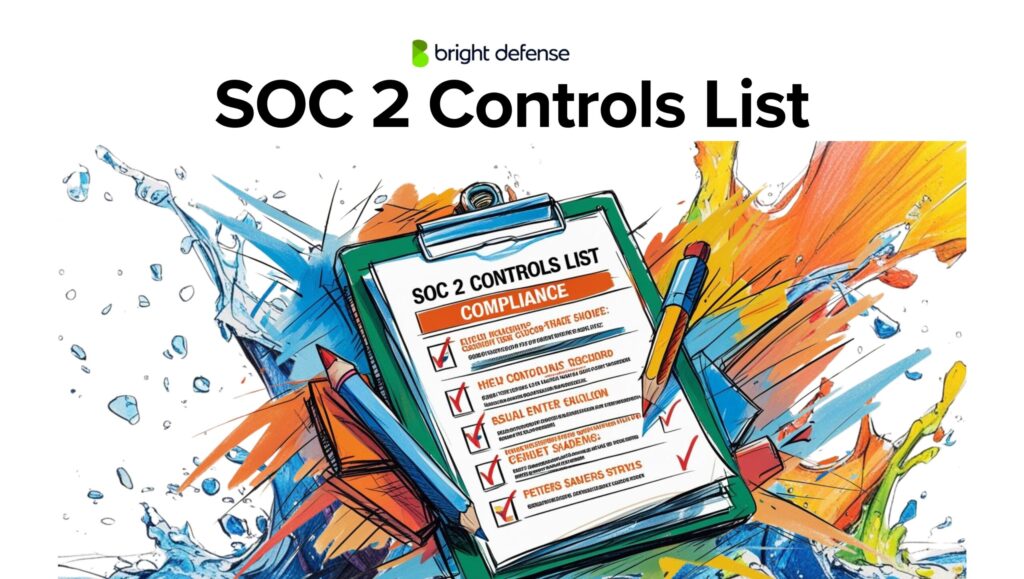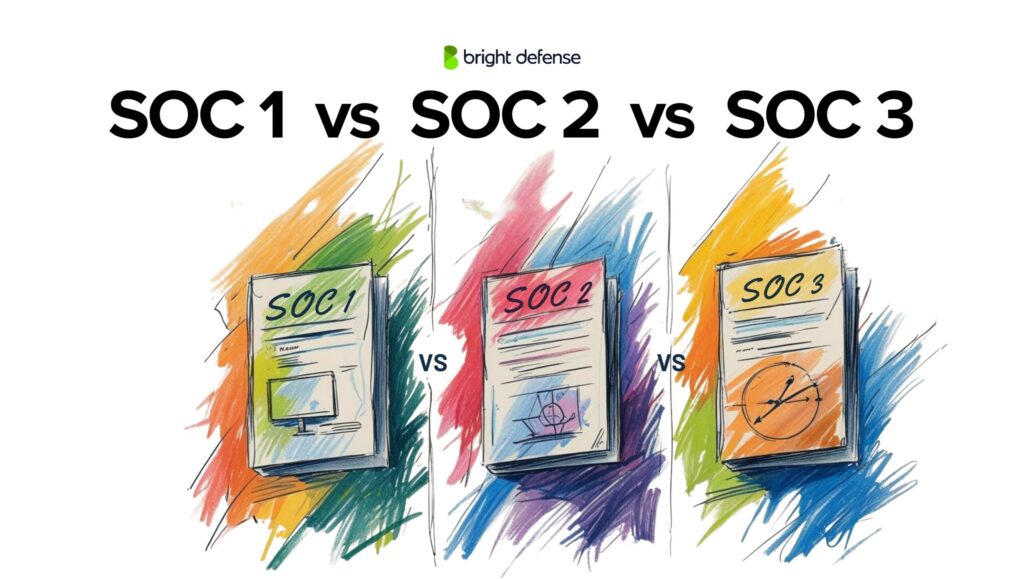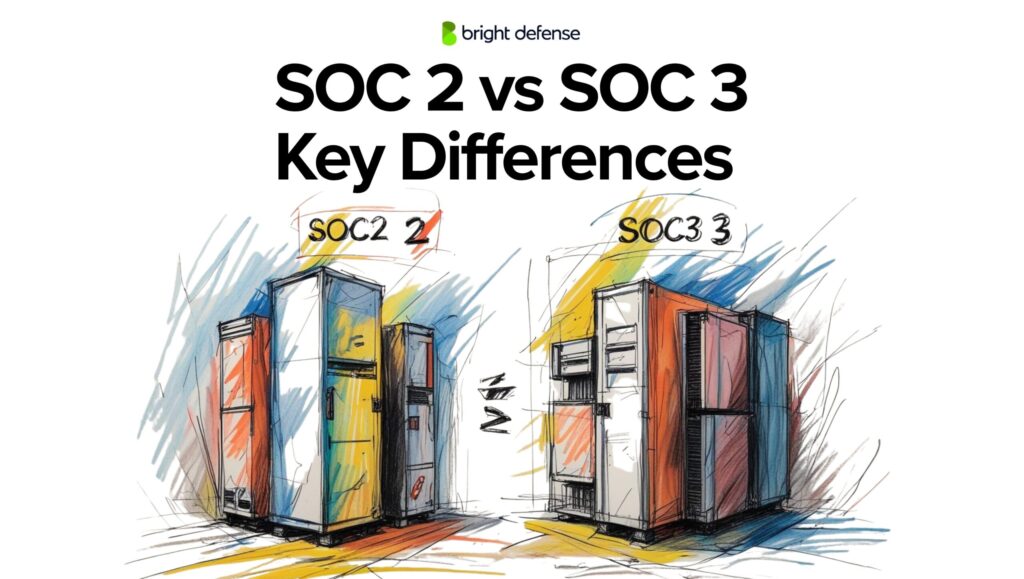
Tim Mektrakarn - CISSP | CISA | ISO 27001
June 28, 2025
FTC Safeguards Rule Updates Affecting Small Businesses in 2024
Introduction
Welcome to our deep dive into the Federal Trade Commission (FTC) Safeguards Rule, a cornerstone regulation that plays a pivotal role in the security of consumer data. In this era of digital transformation, safeguarding sensitive information has never been more critical. As CPAs who handle vast amounts of consumer data, understanding and implementing the FTC Safeguards Rule is not just a regulatory requirement—it’s a fundamental aspect of protecting your clients and sustaining your practice.
This blog post aims to equip you with a comprehensive understanding of the Safeguards Rule, highlighting its significance in the current data security landscape. We’ll explore what the rule entails, why it’s crucial for your practice, and how it impacts the way you manage and protect consumer information. Our goal is to provide you with actionable insights and strategies to not only comply with the rule but also enhance your data security measures, ensuring your clients’ information is safe and secure. Let’s dive in and explore how you can fortify your defenses in the digital age.
Background of the FTC Safeguards Rule
The journey of the FTC Safeguards Rule began with the Gramm-Leach-Bliley Act (GLBA) in 1999, which aimed to modernize financial services by integrating banking, securities, and insurance sectors. A critical component of this legislation was the introduction of measures to protect consumers’ personal financial information. The FTC Safeguards Rule which was revised in 2021, implemented as part of this act, specifically mandates financial institutions, including CPAs who handle consumer data, to secure clients’ sensitive data.

The primary objective of the Safeguards Rule is threefold: to ensure the security and confidentiality of customer information; to protect against any anticipated threats or hazards to the security or integrity of such information; and to guard against unauthorized access to or use of customer information that could result in substantial harm or inconvenience to any customer. Essentially, it’s about putting a robust shield around consumer data, minimizing risks, and maintaining trust.
Who does it apply to? The rule casts a wide net, covering a broad spectrum of entities regarded as “financial institutions,” a category that extends beyond banks and credit unions to include professional tax preparers, accountants, and even some financial advisors—anyone who deals with consumer financial information. It’s not just about being in the financial sector; it’s about the type of information you handle. If you’re a CPA dealing with personal financial data, this rule applies to you.
The Federal Trade Commission (FTC) plays a critical role as the enforcer of the Safeguards Rule. It oversees compliance, offers guidance to institutions on how to align with the rule’s requirements, and takes action against those who fail to protect consumer data adequately. The FTC’s involvement underscores the rule’s importance, serving as a watchdog that ensures financial institutions uphold their duty to protect consumer information.
FTC Safeguards Rule Amendment Affecting Smaller Businesses
In October 2023, the FTC celebrated the 20th anniversary of the Gramm-Leach-Bliley Safeguards Rule with a a new amendment that mandates that non-banking financial institutions under the FTC’s jurisdiction report any data breaches impacting 500 or more individuals. This new amendment goes into full effect on May 13, 2024. Under the amended rule, if a data breach affects at least 500 consumers, the institution must notify the FTC within 30 days of discovering the event, using a specified form available on the FTC’s website. The required notification must include the financial institution’s name and contact details, the types of consumer information involved, the dates of the breach (if determinable), the total number of consumers affected, and a general overview of the incident.
Who Does the FTC Safeguards Rule Apply To?
The FTC Safeguards Rule applies to a wide range of entities considered to be “financial institutions” under the Gramm-Leach-Bliley Act (GLBA). This includes not just traditional banks and credit unions, but also a broad array of non-banking financial companies that engage in activities related to the offering of financial products or services to consumers. Specifically, the rule covers:
- Non-Bank Mortgage Lenders, Brokers, and Servicers: Companies involved in originating, servicing, or brokering mortgages for consumers.
- Payday Lenders: Businesses that offer short-term, high-interest loans to consumers.
- Finance Companies: Entities that offer loans to consumers, including personal loans, debt consolidation loans, and auto loans.
- Auto Dealers: Car dealerships that extend credit to consumers directly or arrange financing and leasing.
- Money Service Businesses (MSBs): This includes check-cashing businesses, foreign currency exchange companies, and money transmitters.
- Professional Tax Preparers and Accounting Firms: Firms and individuals who prepare taxes or provide accounting services to consumers and handle their financial information.
- Credit Counseling Services: Organizations that offer personal finance education, debt management plans, and counseling services.
- Payment Processors: Companies that process payments on behalf of merchants and service providers.
- Debt Collectors: Agencies or companies that collect debts on behalf of others or purchase debts to collect on their own account.
- Investment Advisors: Non-bank entities that provide investment advice to consumers.
- Finders: Entities that bring together buyers and sellers of a financial product or service for a transaction.
These financial institutions are required to “develop, implement, and maintain reasonable administrative, technical, and physical safeguards to protect the security, confidentiality, and integrity of customer information.” The rule’s broad definition ensures that a wide range of entities that deal with consumer financial information fall under its purview, reflecting the diverse nature of financial services in the modern economy.

9 Key Elements of an Information Security Program
Section 314.4 of the Safeguards Rule mandates your company to include nine crucial elements in its information security program. Let’s actively explore these elements.
- Appoint a Qualified Individual to oversee and implement your company’s information security program. This person could be an in-house employee, affiliate, or external service provider, with the key requirement being their real-world knowledge appropriate for your company’s size and needs. Regardless of the size of your business, you must ensure this individual possesses the necessary expertise. If outsourcing, your company must still supervise the external Qualified Individual, emphasizing that the ultimate responsibility for the information security program lies with your company.
- Undertake a Risk Assessment to identify potential internal and external risks to the security, confidentiality, and integrity of customer information. This process involves cataloging the information you hold and its locations, then critically assessing foreseeable threats. You must document this assessment, continuously update it based on operational changes or new threats, and use it to guide your security measures.
- Design and Implement Controls to mitigate the identified risks. This includes:
- Regularly reviewing and updating access controls to ensure only authorized personnel can access customer information.
- Maintaining an updated inventory of your company’s data and its storage locations to tailor your security measures effectively.
- Encrypting customer data both stored and in transit, or using approved alternatives if encryption isn’t feasible.
- Evaluating the security of apps used for storing, accessing, or transmitting customer information.
- Implementing multi-factor authentication for system access, with written approval from the Qualified Individual for any secure alternatives.
- Securely disposing of customer information within two years of last use, unless a legitimate business need extends this period.
- Adapting your security program to accommodate changes in your information system or network.
- Monitoring authorized user activity and detecting unauthorized access through established procedures.
- Regularly Test and Monitor Safeguards by conducting annual penetration testing and bi-annual vulnerability assessments, or implementing continuous monitoring systems. Adjust testing frequency based on significant operational changes or emerging risks.
- Train Your Staff to recognize security risks, providing regular security awareness training and specialized instruction for those directly involved in your information security program.
- Monitor Service Providers to ensure they maintain appropriate safeguards. Specify your security expectations in contracts and periodically reassess their compliance.
- Update Your Information Security Program Regularly to reflect operational changes, lessons from risk assessments, emerging threats, and other relevant shifts in your business environment.
- Develop a Written Incident Response Plan detailing your company’s actions in response to a security event. This plan should outline goals, roles, communication strategies, remediation processes, documentation protocols, and post-event evaluations.
- Mandate Regular Reports from the Qualified Individual to your Board of Directors or a designated senior officer, covering the company’s compliance status, risk assessments, control decisions, service provider arrangements, test results, security incidents, and recommendations for program adjustments.

NIST Cybersecurity Framework
Implementing the NIST Cybersecurity Framework provides a strategic approach to covering all aspects of the FTC Safeguards Rule, offering businesses a comprehensive methodology for enhancing their information security programs. This framework is especially relevant for CPAs and financial institutions tasked with safeguarding sensitive consumer data. By aligning with the NIST Cybersecurity Framework, organizations can ensure they not only comply with the FTC Safeguards Rule but also adopt a robust stance against the evolving landscape of cyber threats.
The NIST Cybersecurity Framework is structured around five core functions: Identify, Protect, Detect, Respond, and Recover. Each of these functions supports the key requirements of the FTC Safeguards Rule, offering a holistic approach to information security.
- Identify: This function aligns with conducting a risk assessment as required by the FTC Safeguards Rule. It involves identifying the business context, resources that support critical functions, and related cybersecurity risks. This provides an understanding of how to manage cybersecurity risk to systems, assets, data, and capabilities, effectively mapping out the terrain that needs safeguarding.
- Protect: Developing and implementing appropriate safeguards to ensure delivery of critical infrastructure services dovetails with the FTC’s mandate for designing and implementing information safeguards. This involves access control, awareness training, data security, information protection processes, and maintenance procedures that are key to protecting consumer information.
- Detect: The ability to identify the occurrence of a cybersecurity event is crucial for compliance with the Safeguards Rule, which requires regular testing and monitoring of the effectiveness of safeguards. The Detect function offers strategies for developing and implementing the appropriate activities to identify a cybersecurity event promptly.
- Respond: This function corresponds with the FTC Safeguards Rule’s requirements for an incident response plan. It outlines how to take action regarding a detected cybersecurity event, covering response planning, communications, analysis, mitigation, and improvements. This ensures that an organization can contain the impact of a potential security event.
- Recover: The Recover function aligns with the Safeguards Rule’s broader aim of maintaining resilience in the face of cyber threats. It focuses on restoring any capabilities or services that were impaired due to a cybersecurity event. This includes recovery planning, improvements, and communications, ensuring that an organization can quickly adapt and return to normal operations while minimizing the impact on consumer data.
By implementing the NIST Cybersecurity Framework, businesses can systematically address the requirements of the FTC Safeguards Rule, from identifying and protecting sensitive consumer data to detecting, responding to, and recovering from cybersecurity incidents. This not only ensures compliance with regulatory requirements but also strengthens an organization’s overall cybersecurity posture, protecting both the organization and the consumers it serves. Adopting this framework offers a clear path to safeguarding sensitive information in an increasingly complex and risky digital environment.

The Impact of the FTC Safeguards Rule on Businesses
The FTC Safeguards Rule, while specifically designed to ensure the protection of consumer financial information, casts a wide net that affects a variety of businesses across the financial sector. Its impact is profound, influencing operational, technological, and administrative aspects of businesses, from large financial institutions to small accounting firms. Understanding the breadth of this rule’s effect, the importance of adherence, and the consequences of falling short is crucial for all entities that handle consumer financial data.
How the Rule Affects Different Types of Businesses
Large Financial Institutions: For banks, insurance companies, and large investment firms, the FTC Safeguards Rule necessitates the implementation of extensive information security programs. These entities often have the resources to develop sophisticated safeguards but face the challenge of scaling these protections across vast and complex organizational structures.
Small to Medium Businesses (SMBs): Smaller businesses, including many CPA practices, may find the rule challenging due to limited resources. However, the flexibility of the rule allows for security measures that are appropriate to the size and complexity of the business, enabling SMBs to comply effectively without the need for overly burdensome implementations.
Service Providers: Businesses that process or handle consumer financial information on behalf of other businesses also fall under the purview of the Safeguards Rule. They must ensure their security measures meet the requirements of the rule, affecting contracts and business relationships with their clients.
The Importance of Compliance and Consequences of Non-Compliance
Compliance: Adhering to the FTC Safeguards Rule is not only a legal requirement but also a critical component of building trust with clients. Compliance demonstrates a commitment to protecting sensitive financial information, which can be a significant competitive advantage.
Non-Compliance: The consequences of failing to comply with the Safeguards Rule can be severe. Businesses may face legal actions, including fines and penalties, from the FTC. Additionally, non-compliance can lead to breaches of consumer data, resulting in reputational damage, loss of client trust, and potentially significant financial losses from lawsuits or remediation efforts.
Steps to Compliance with the FTC Safeguards Rule
Complying with the FTC Safeguards Rule involves a series of strategic steps that businesses must undertake to protect consumer data effectively. Here, we outline a comprehensive approach to compliance, emphasizing best practices for information security and highlighting essential tools and resources.
Step 1: Appoint a Qualified Individual
Begin by appointing a Qualified Individual who will oversee the development, implementation, and maintenance of your information security program. Ensure this individual has the necessary expertise relevant to your business size and the nature of the data you handle.
Step 2: Conduct a Comprehensive Risk Assessment
Perform a thorough risk assessment to identify potential vulnerabilities within your system that could affect the security, confidentiality, and integrity of customer information. Document this process and the findings to guide the development of your security measures.
Step 3: Develop and Implement a Written Information Security Plan (WISP)
Based on the risk assessment, create a WISP that details the policies and procedures for protecting customer information. This plan should address physical, technical, and administrative safeguards.
Step 4: Design and Implement Safeguards
Implement safeguards to control the risks identified in your risk assessment. This may include access controls, encryption, secure data disposal practices, and multi-factor authentication.
Step 5: Regular Testing and Monitoring
Establish a regular schedule for testing and monitoring the effectiveness of your safeguards. This should include penetration testing, vulnerability scanning, and the monitoring of user activity for unauthorized access.

Best Practices for Information Security
- Employee Training: Regularly train employees on data security practices and the importance of protecting customer information.
- Access Management: Limit access to customer information to only those employees who need it to perform their job functions.
- Data Encryption: Encrypt sensitive customer information both in transit and at rest.
- Secure Data Disposal: Implement policies for the secure disposal of customer information that is no longer needed.
- Incident Response Plan: Develop and regularly update an incident response plan to quickly address any data breaches or security incidents.
Tools and Resources
- Security Frameworks: Utilize established security frameworks, such as NIST Cybersecurity Framework or ISO/IEC 27001, as guides for structuring your information security program.
- Risk Assessment Tools: Employ risk assessment tools and software to identify and prioritize potential vulnerabilities.
- Encryption Software: Use encryption software to protect data in transit and at rest.
- Multi-factor Authentication Solutions: Implement multi-factor authentication solutions to add an extra layer of security for accessing sensitive information.
- Cybersecurity Training Programs: Invest in cybersecurity training programs for your employees to raise awareness and understanding of security best practices.
Additional Resources
- FTC Website: The FTC provides guidance, updates, and resources on the Safeguards Rule and how to comply.
- Professional Associations: Many professional associations offer resources, tools, and training for data protection and compliance with regulations like the Safeguards Rule.
- Cybersecurity Consultants: Consider hiring cybersecurity consultants for personalized advice on enhancing your information security program and ensuring compliance.
By following these detailed steps, adopting best practices for information security, and leveraging available tools and resources, businesses can significantly improve their compliance with the FTC Safeguards Rule and protect their customers’ sensitive information effectively.
Conclusion
In this comprehensive exploration of the FTC Safeguards Rule, we’ve delved into the crucial aspects that businesses, especially CPAs and financial institutions handling consumer data, need to understand and implement to ensure the highest standards of data protection. From the rule’s background and key requirements to the steps for compliance and best practices for maintaining robust information security, our journey has highlighted the essential elements that underpin the secure handling of consumer financial information.
The FTC Safeguards Rule stands as a pivotal regulation designed to protect consumer information by mandating financial institutions to implement comprehensive, effective security measures. Its significance cannot be overstated, as it not only ensures the confidentiality, integrity, and availability of consumer data but also fosters trust in the financial services sector, safeguarding the very backbone of consumer privacy and data security.
Elevate Your Data Security and Ensure Continuous Compliance with Bright Defense
In the digital age, where data breaches and cyber threats loom larger than ever, safeguarding your customer’s sensitive information isn’t just a regulatory requirement—it’s a cornerstone of trust and integrity in your business. The FTC Safeguards Rule mandates rigorous standards to protect consumer data, but navigating these requirements can be complex and daunting. That’s where Bright Defense comes in, offering Continuous Compliance services tailored to help your business not only meet but exceed these standards with ease and efficiency.
Leverage the Power of NIST Cybersecurity Framework with Bright Defense
At Bright Defense, we understand the importance of a comprehensive approach to cybersecurity. That’s why we advocate for the implementation of the NIST Cybersecurity Framework (CSF) alongside our Continuous Compliance services. The NIST CSF provides a robust blueprint for managing and mitigating cybersecurity risk, perfectly complementing the requirements of the FTC Safeguards Rule. By integrating the NIST CSF into your cybersecurity strategy with Bright Defense, you’re not just complying with regulations; you’re setting a new standard for data security within your industry.

Why Choose Bright Defense Continuous Compliance Services?
- Expert Guidance: Our team of cybersecurity experts specializes in the intricacies of the FTC Safeguards Rule and the NIST CSF, ensuring your business adopts best practices tailored to your specific needs.
- Proactive Monitoring: With Continuous Compliance, we don’t wait for data breaches to happen. Our proactive monitoring and regular assessments keep your defenses sharp and ahead of potential threats.
- Customized Solutions: Recognizing that no two businesses are alike, we offer customized solutions that align with your business size, data complexity, and specific risk factors.
- Peace of Mind: Sleep better knowing that Bright Defense is continuously working to protect your customer’s data, allowing you to focus on what you do best—running your business.
Take Action Today
Don’t wait for a data breach to realize the importance of robust cybersecurity measures. Level up your FTC Safeguards Rule compliance and embrace the NIST Cybersecurity Framework with Bright Defense. Our Continuous Compliance services are designed to provide you with peace of mind, knowing that your business is not just compliant, but also secure and resilient in the face of cyber threats.
Contact Bright Defense today to schedule a consultation and learn how we can help you transform your approach to data security. Elevate your cybersecurity strategy, ensure continuous compliance, and protect your customers’ sensitive information with Bright Defense. Your commitment to data security starts here.
FAQ: FTC Safeguards Rule in 2024
What is the FTC Safeguards Rule?
The FTC Safeguards Rule, part of the Gramm-Leach-Bliley Act (GLBA), mandates that financial institutions in the United States implement comprehensive security programs to protect the confidentiality, integrity, and availability of customer information.
Who must comply with the FTC Safeguards Rule?
The rule applies to a wide array of entities considered as financial institutions, including non-bank mortgage lenders, payday lenders, finance companies, auto dealers, money service businesses, tax preparers, credit counseling services, payment processors, debt collectors, investment advisors, and finders.
What are the main requirements of the FTC Safeguards Rule?
Financial institutions must:
- Designate a qualified individual to oversee their information security program.
- Conduct a risk assessment to identify threats to customer information.
- Develop and implement a written information security plan.
- Design and apply safeguards to control identified risks.
- Regularly test and monitor the effectiveness of those safeguards.
- Ensure service providers also implement adequate safeguards.
- Evaluate and adjust their security program in response to business changes or new threats.
What changes were made to the FTC Safeguards Rule in 2023?
In 2023, the FTC announced amendments requiring non-banking financial institutions to report data breaches affecting 500 or more individuals. This amendment emphasizes the importance of notification events related to unauthorized access to unencrypted customer information.
How do I report a data breach under the amended Safeguards Rule?
Affected institutions must report breaches involving 500 or more consumers to the FTC within 30 days of discovery, using a form available on the FTC’s website. The report must include the institution’s contact information, types of information involved, dates of the breach, number of consumers affected, and a general description of the event.
When does the new FTC Safeguards Rule amendment take effect?
The amendment will become effective 180 days after its publication in the Federal Register on November 13, 2023 which means May 13, 2024.
Where can I find more information about complying with the FTC Safeguards Rule?
The FTC provides resources, guidance, and updates on the Safeguards Rule on a special page dedicated to the Gramm-Leach-Bliley Act on their website.
How can financial institutions ensure compliance with the FTC Safeguards Rule?
Institutions should appoint a qualified individual to manage their security program, conduct regular risk assessments, develop and enforce a comprehensive written information security plan, regularly test their security measures, and stay informed about updates to the rule and cybersecurity threats.
Get In Touch



